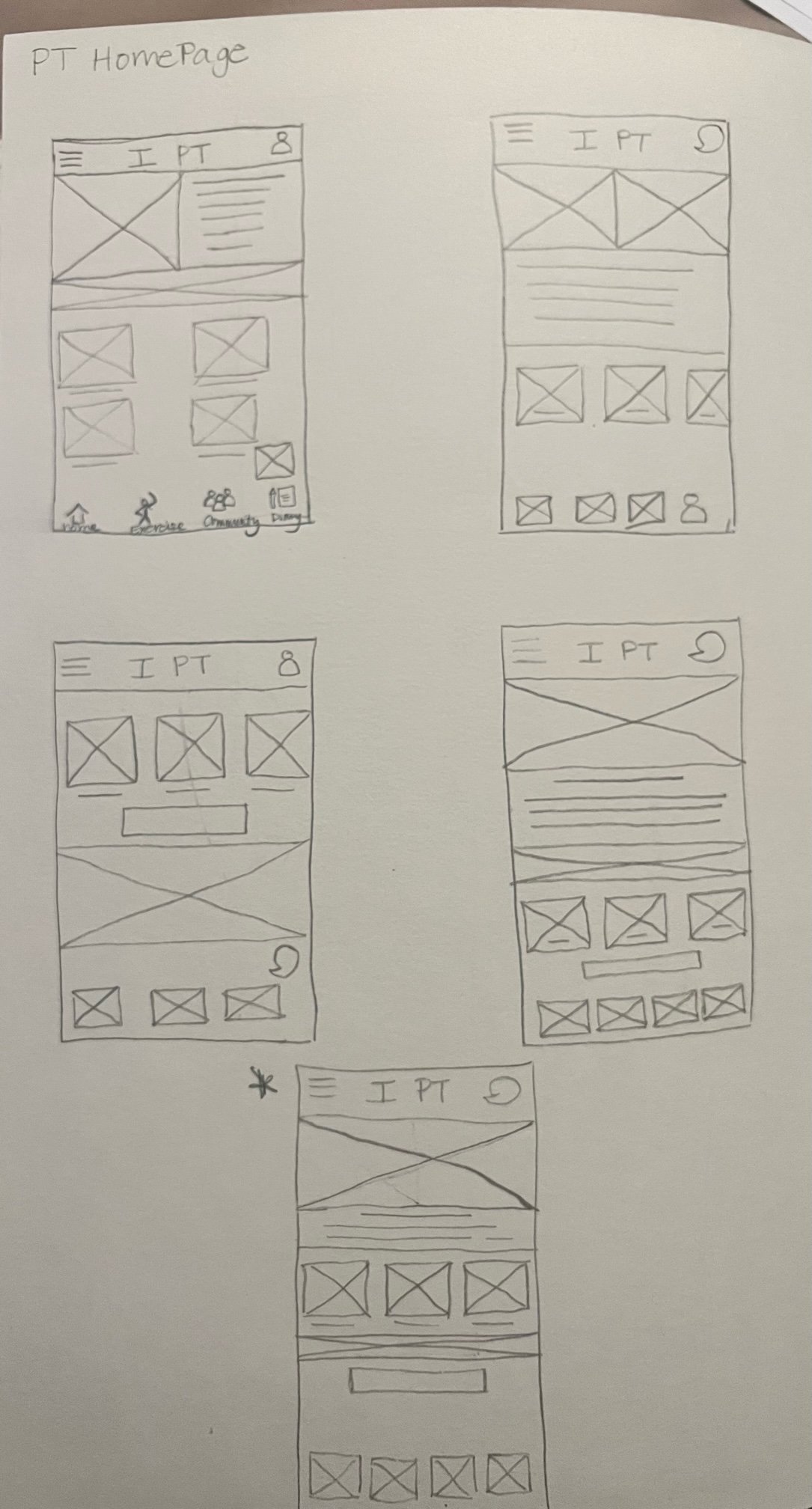
BACKGROUND
Physical therapy patients aren’t consistently completing their home exercises.
I've been a physical therapist for over a decade and I know that along with a personalized skilled treatment plan, the home exercise program given to patients is essential for full recovery following an injury or surgery. However, according to the Journal of Medical Internet Research, as many as 50% of physical therapy patients do not complete their home exercises on a consistent basis. With this project, I sought ways to improve patient home compliance through the use of an interactive companion app.
PROBLEM
Patients aren’t engaged in their treatment plan at home.
Patients state that their motivation to participate is limited by a lack of interaction and feedback when using their current home exercise program.
SOLUTION
Patient engagement and feedback are key.
A physical therapy companion app that motivates patients to complete their home exercises and become active participants in reaching their therapeutic goals.
USER RESEARCH: INTERVIEWS
Interviewees would be more likely to complete their home exercises if they felt accountability and involvement in their plan of care.
I performed interviews with 6 previous physical therapy patients to evaluate the patient physical therapy perspective, their goals, needs and frustrations.
A primary user group I found was patients who are motivated but feel disconnected to their own care.
This research confirmed my hypothesis that patients would appreciate more involvement in goal setting and their plan of care. Other prominent issues noted were lack of time, forgetfulness and lack of feedback.
I created empathy maps for each participant to highlight the major insights.
I came back to the user interview insights throughout the design process to maintain perspective.
USER RESEARCH: PAIN POINTS
Patients experience a lack of clarity, time, and feedback in their care journey.
Disconnection, missed appointments, and uncertainty about performing exercises correctly fuel patient frustration.
PERSONA
I created personas to highlight the target user for the PT partner app.
Showcased here is Lindsay who is motivated but frustrated by her home program.
USER JOURNEY MAP
Mapping Lindsay’s user journey revealed how useful a physical therapy app could be as a companion to care.
DESIGN: PAPER WIREFRAMES
Iterating on the design of the homepage helped me to discover the easiest to navigate user flow.
The homepage serves as a dashboard and link to the most important items on the users journey.
ITERATIONS
CHOSEN DESIGN
DESIGN: DIGITAL WIREFRAMES
Screen designs were based directly from research performed and interviews with patients. They want to be more engaged in their recovery.
It was important for the navigation to be intuitive and easy to use to increase compliance with exercise program. Challenges add a competitive element that keeps patients engaged.
LOW FIDELITY PROTOTYPE
The prototype highlights the user flow for completing an exercise in a patient’s home exercise program.
USABILITY STUDY
I conducted usability studies to determine if patients can complete their home exercise program and obtain useful feedback from the app.
MOCKUPS
The early design had all the necessary elements of the home page but navigation and clarity could improve.
After usability studies I added additional cues, personalization and labels for easier navigation and a more pleasant experience.
BEFORE USABILITY STUDIES
AFTER USABILITY STUDIES
I wanted to make it clear to users where they go to provide feedback and where they will be sent if they decide against leaving feedback.
BEFORE USABILITY STUDY 2
AFTER USABILITY STUDY 2
MOCKUPS OF MAIN USER FLOW
HIGH FIDELITY PROTOTYPE
ACCESSIBILITY
The app accommodates users with visual, hearing, and language needs.
To ensure accessibility, the PT Partner app includes high-contrast colors for color blindness, multimodal exercise instructions (written, audio, video, and captions), and multilingual support.
TAKE AWAYS
Impact
“It’s a good tool for self pacing and self care, It keeps you on track for what you are supposed to be doing at home.”
What I Learned
Throughout this project I learned how important personal motivation is to therapy outcomes and patient engagement. I learned that making a physical therapy companion app easy to use and interactive can increase program adherence.
NEXT STEPS























